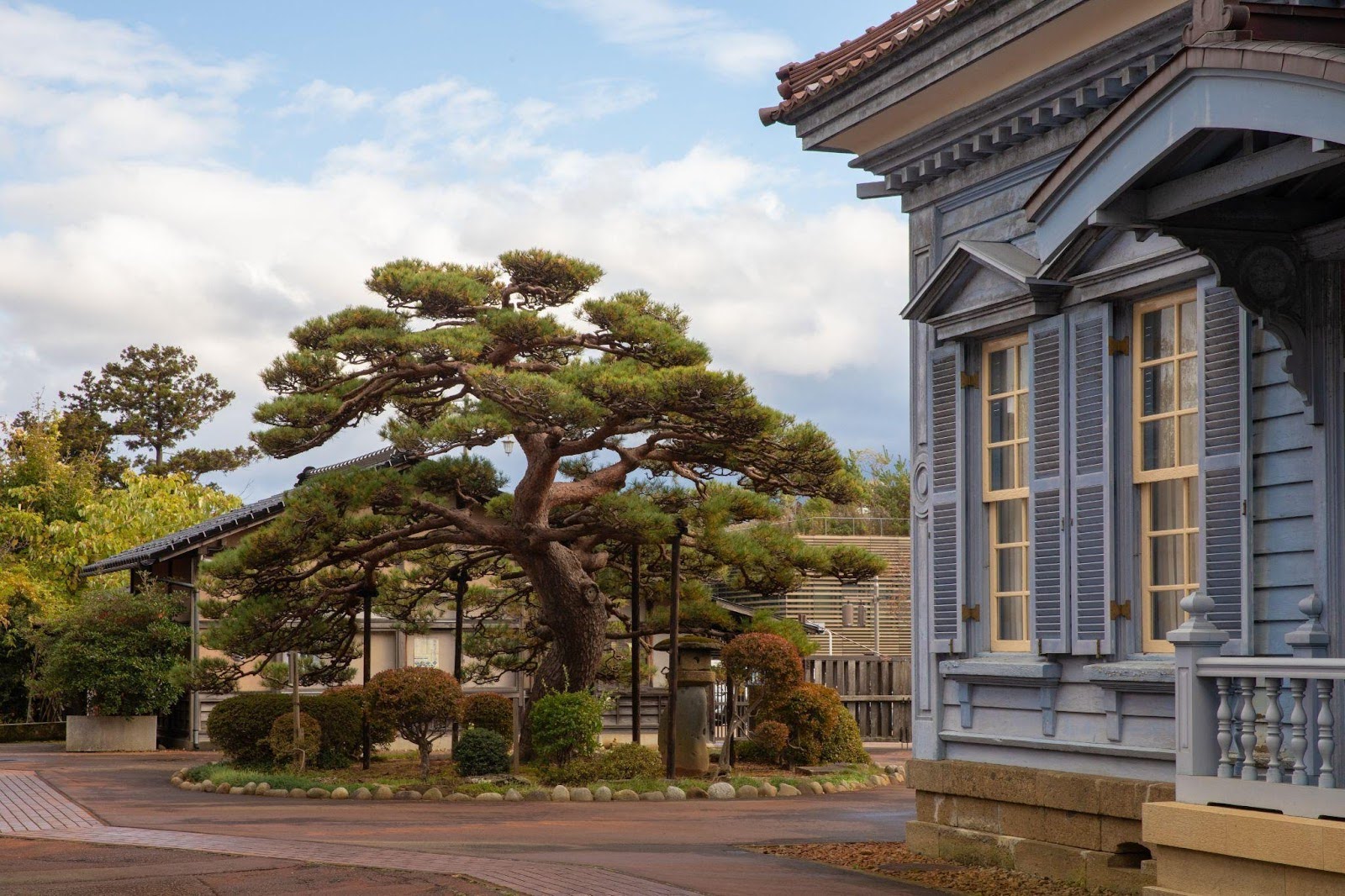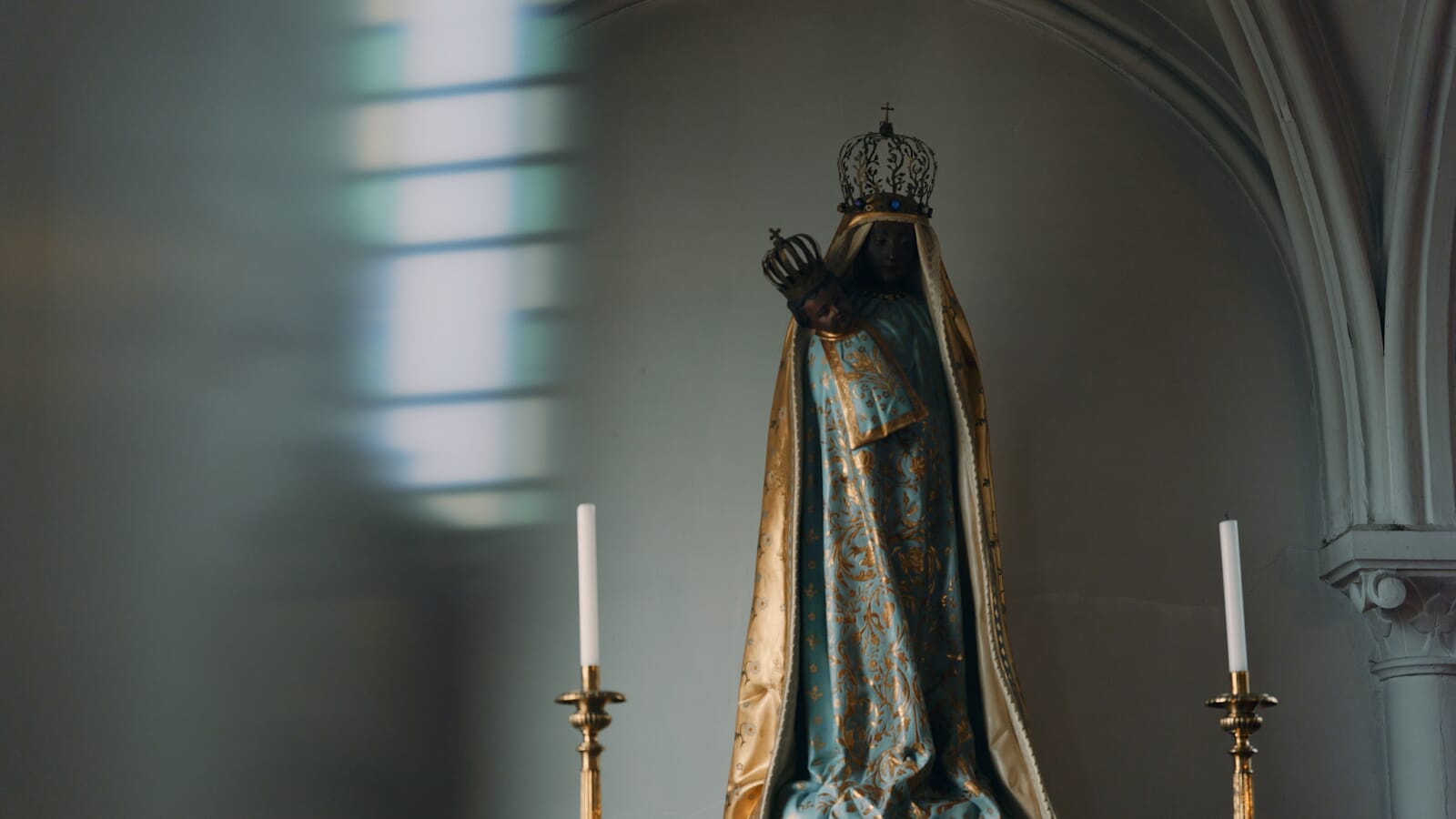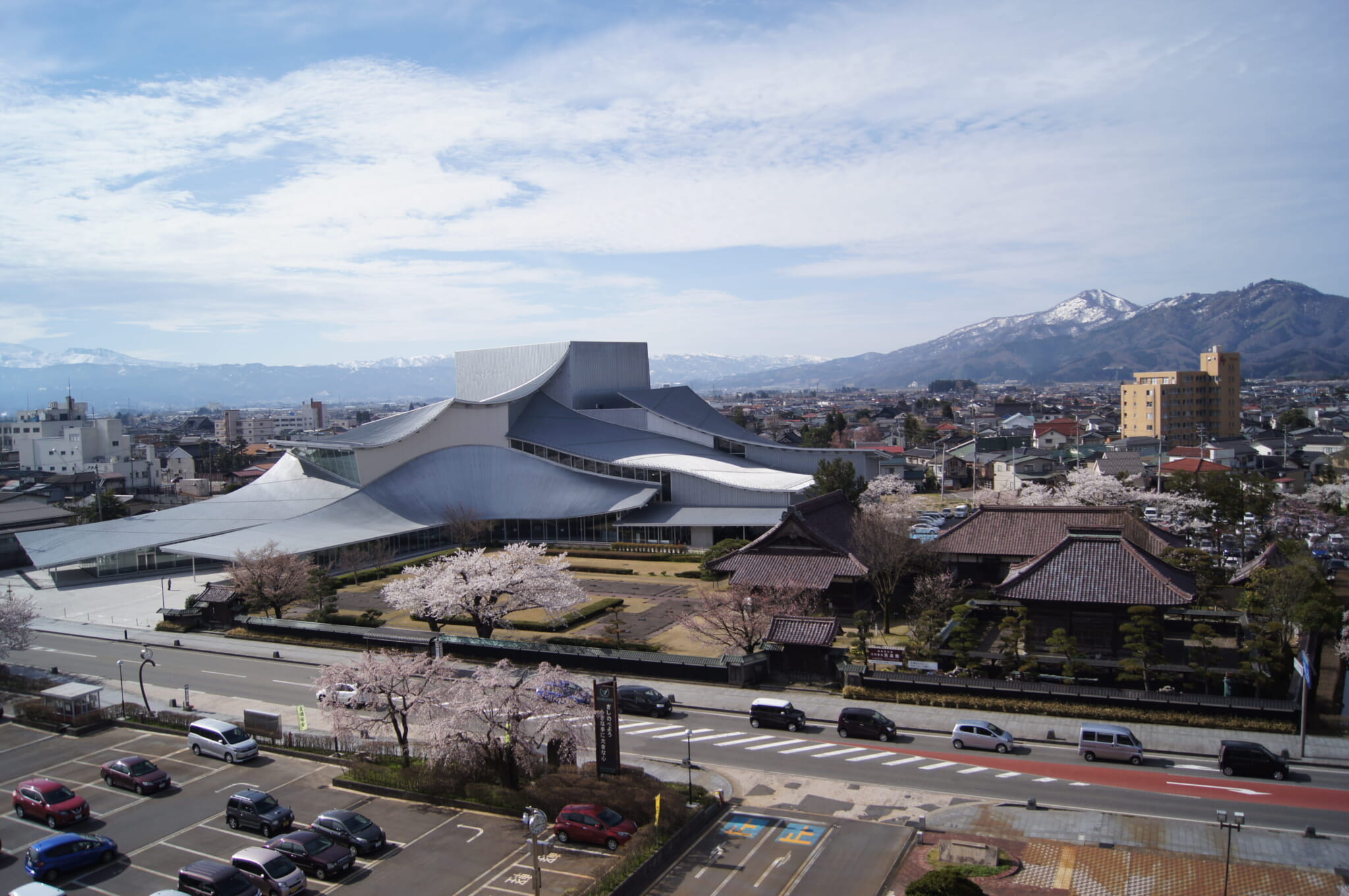The city of Tsuruoka is known primarily as the gateway to the Dewa Sanzan, or the Three Mountains of Dewa: Mount Haguro, Mount Gassan and Mount Yudono. And while those sacred mountains and their pilgrimage trails and rituals may be the area’s major draw, Tsuruoka itself abounds in attractions. History and architecture buffs in particular will find a wealth of buildings and exhibits to explore, from the Chido Museum and its National Important Treasures to the Tsuruoka Catholic Church, home of the only Black Madonna in the whole of Japan. Here are some of the best things to do in Tsuruoka city.
From Castle Grounds to Shrine Grounds
Until the early Meiji period (1868–1912), Tsurugaoka Castle, the seat of the Sakai clan, stood at the center of Tsuruoka. After it was dismantled — a fate shared by many of Japan’s castles as the country distanced itself from its feudal past — Shonai Shrine was built where the inner citadel once stood. The shrine, fondly referred to as Jinja-han by locals, maintains a connection to the area’s former rulers, however, with four Sakai clan lords enshrined as deities. Historical items, including armor and dolls once belonging to the Sakai family, are also on display in the shrine’s treasure hall.
Before visiting, be sure to check out Shonai Shrine’s official Instagram page, where the shrine’s enthusiastic caretakers share information on events and traditions, such as mochi-tsuki (pounding rice into mochi) and the annual fire festival. Other events are decidedly more modern and involve projection mapping and DJs.

Architecture and History on Display at the Chido Museum
A short walk from Shonai Shrine will bring you to the Chido Museum, a repository of information on the history of the Shonai region of which Tsuruoka is a part. The museum has been maintained by the family of the former Sakai feudal lords, and it is still loved today by locals who refer to it fondly as Tono-sama. The museum, made up of a Japanese-style garden and several historical buildings of both Japanese and Western styles, houses archeological items unearthed in the area and various articles, such as tools, weapons, calligraphy, furnishings and folk materials, once used by the residents and feudal lords of the Shonai area.
Visitors to the museum, named after the Chidokan, the old Shonai domain school operated by the Sakai clan, are greeted by the Akamon, a traditional gate. Beyond, brilliant displays of structural craftsmanship and the cultural riches contained within await.
Architectural aficionados will also want to check out the neighboring Shogin Tact Tsuruoka cultural hall designed by Kazuyo Sejima, co-founder of renowned Tokyo-based architectural firm SANAA. Not only does its sweeping curvature make for an impressive silhouette on the landscape, the hall also offers an interesting view of the Chido Museum through its smooth polished glass and metallic structure, making for a fantastic juxtaposition of new and old.
Western-Inspired Architecture
Of the buildings that make up the Chido Museum, the Former Tsuruoka Police Station and the Former Nishitagawa District Office, both designated as National Important Treasures, are particularly worthy of a closer look. Built in 1884, the Former Tsuruoka Police Station is an example of giyofu architecture, a Meiji-period style of construction notable for its semblance to Western architecture. The police station features gables, a porch and sash windows, and seems to come straight out of a period movie. The bright blue building, which can only be admired from the outside, conveys information on police trials of the Meiji era.
Across from the police station is the Former Nishitagawa District Office, which dates to 1881. Also built in the giyofu style, it boasts an eye-catching clock tower and a balcony, among other Western-inspired elements. Today, the building hosts exhibitions on the Shonai region through the ages.
Don’t miss the museum’s traditional Japanese buildings, including the thatched-roofed Former Shibuya Family Home, and the garden at the back of the grounds. Relax while admiring the landscape, which features an artificial gorge, a dry waterfall and a tranquil pond enclosed by smooth rocks. Make sure to peer into the Japanese Folklore Materials House, too, for interesting exhibits showcasing the lifestyle that was once common in the area.

Romanesque Architecture and a Rare Black Madonna
On the other side of Shonai Shrine stands the Tsuruoka Catholic Church, consecrated in 1903. That same year, a Black Madonna was gifted to the church from France, making Tsuruoka Catholic Church one of the relatively few custodians worldwide — and the only custodian in Japan — of a Black Madonna. The church, which stands 23.7 meters high, is also notable for its stunning windows that appear to be stained glass but aren’t. The window images are, in fact, drawings encased between two panels of glass.
Unsurprisingly, Tsuruoka Catholic Church — one of only two churches in Japan with a samurai gate and the seventh-oldest surviving wooden church in the country — is designated as a National Important Cultural Property. Designed by the French priest Jacques Papinot, it is considered an excellent example of Romanesque architecture and an enchanting instance of the blending of Japanese and Western styles. As the church is still in operation, visitors are requested to appreciate the space respectfully.
This is but the beginning of Tsuruoka’s incredible architecture, as in addition to its traditional and Japanese-Western fusion structures, the city has interesting examples of newer architecture, such as the prize-winning Tsuruoka Art Forum. Beyond buildings, Tsuruoka is famous for its food, so much so that it was named Japan’s first UNESCO Creative City of Gastronomy. Be sure to take the time to savor local cuisine as you survey the cityscape.
Convenient Accommodation
Ease your exploration with a stay at the Tokyo Dai-Ichi Hotel Tsuruoka. Not only is the hotel a mere three-minute walk from Tsuruoka Station, it’s also directly connected to the bus terminal, where you can hop aboard community buses, intercity buses and buses bound for the regional Shonai Airport and Mount Haguro, a sacred place of prayer.
<More Info>
Check out Tsuruoka before you go with this handy virtual tour and YouTube video introducing the city’s major attractions, then explore on foot or hop on a community bus.
Updated On January 24, 2024









